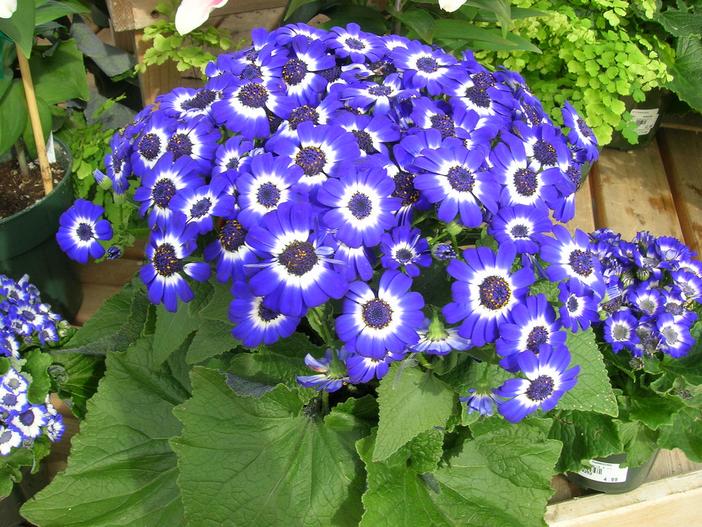Cineraria
(Senecio hybridus)
Cineraria (Senecio hybridus)
/
/

brewbooks
CC BY-SA 2.0
Image By:
brewbooks
Recorded By:
Copyright:
CC BY-SA 2.0
Copyright Notice:
Photo by: brewbooks | License Type: CC BY-SA 2.0 | License URL: https://creativecommons.org/licenses/by-sa/2.0/ | Uploader: brewbooks | Publisher: Flickr


Estimated Native Range
Summary
Senecio hybridus, commonly known as Cineraria or Florist’s Cineraria, is a perennial herb that is a hybrid species with parent species native to the Canary Islands. In its native habitat, Cineraria thrives in coastal cliffs and scrublands, where it is adapted to the mild, maritime climate. It typically grows to a height and width of 1.5-2 feet (0.46-0.6 meters), forming a compact, bushy mound. The plant is renowned for its vibrant and showy flowers, which come in a variety of colors including white, red, pink, blue, and purple. These blossoms create a stunning display during the winter and spring months when few other plants are in flower.
Cineraria is valued for its bright, long-lasting blooms that add color to gardens during the cooler seasons. It is often used in container plantings, border displays, and as an indoor potted plant. While it prefers part shade, it can tolerate full sun in cooler climates. The plant requires medium amounts of water and grows best in loamy or sandy soils with good drainage. It is not particularly drought-tolerant and may need protection from hot afternoon sun in warmer regions. Cineraria can be susceptible to pests such as aphids and whiteflies, and fungal diseases like powdery mildew if the foliage remains wet. It is generally treated as an annual in cultivation, as it does not tolerate extreme heat or cold well.CC BY-SA 4.0
Cineraria is valued for its bright, long-lasting blooms that add color to gardens during the cooler seasons. It is often used in container plantings, border displays, and as an indoor potted plant. While it prefers part shade, it can tolerate full sun in cooler climates. The plant requires medium amounts of water and grows best in loamy or sandy soils with good drainage. It is not particularly drought-tolerant and may need protection from hot afternoon sun in warmer regions. Cineraria can be susceptible to pests such as aphids and whiteflies, and fungal diseases like powdery mildew if the foliage remains wet. It is generally treated as an annual in cultivation, as it does not tolerate extreme heat or cold well.CC BY-SA 4.0
Plant Description
- Plant Type: Herb
- Height: 1.5-2 feet
- Width: 1.5-2 feet
- Growth Rate: Moderate
- Flower Color: White, Red, Pink, Blue, Purple
- Flowering Season: Winter, Spring
- Leaf Retention: Evergreen
Growth Requirements
- Sun: Part Shade
- Water: Medium
- Drainage: Medium, Fast
Common Uses
Border Plant, Low Maintenance, Potted Plant
Natural Habitat
Coastal cliffs and scrublands of the Canary Islands
Other Names
Common Names: Pericallis x hybrida, Florist’s Cineraria
Scientific Names: , Senecio hybridus,
GBIF Accepted Name: